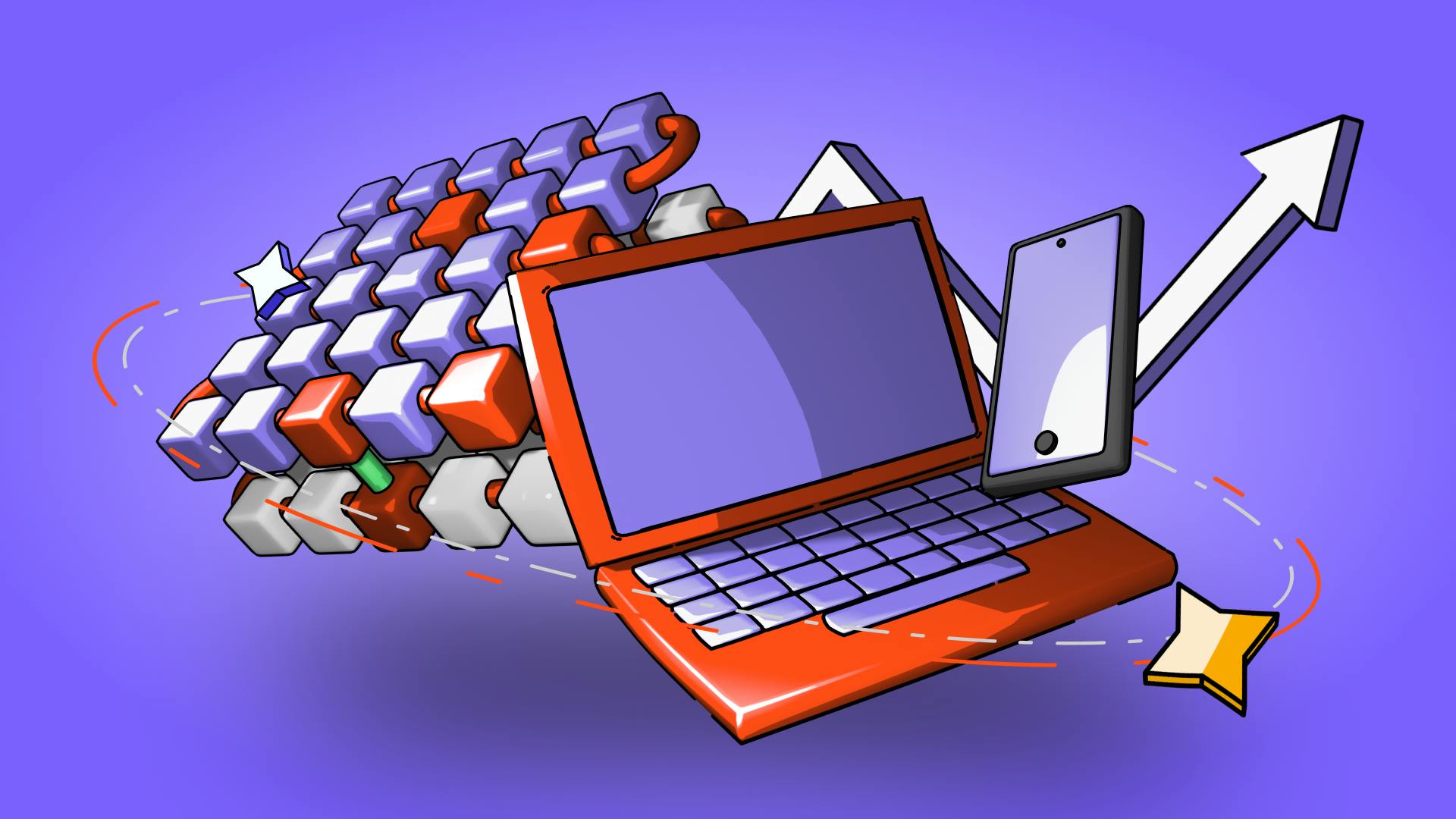Blockchain Voting Systems: Potential and Pitfalls
December 5, 2025

by Coinmetro Editorial Team
December 5, 2025
Essentially, blockchain technology is a system of recording information in a way that makes it difficult or impossible to change, hack, or cheat the system. A blockchain is therefore a digital ledger of transactions that is duplicated and distributed across the entire network of computer systems on the blockchain. This technology fosters transparency and security in applications across various sectors, including voting systems.
In the context of voting, blockchain ensures that every vote cast is recorded in a secure, immutable manner. This means once a vote is registered on the blockchain, it cannot be altered or deleted, which helps in maintaining the integrity of the voting process. Additionally, the decentralized nature of blockchain prevents any single entity from having control over the entire voting system, which reduces the risk of tampering or fraud.
Traditional voting methods typically involve either paper ballots or electronic voting machines. While these methods have been used for decades, they come with several challenges. For instance, paper ballots require a significant amount of manual handling, which can lead to human errors and slow down the counting process. Electronic voting machines, while faster, have been criticized for security vulnerabilities and lack of transparency in how votes are tallied.
Blockchain voting systems present a promising solution to many of these challenges. By leveraging blockchain technology, votes can be cast and recorded in a way that is both transparent and secure. Each vote is encrypted and added to the blockchain, providing a permanent record that can be verified by all parties but cannot be altered once recorded. This system could potentially increase accessibility by allowing remote voting via secure devices, thus reducing the need for physical polling stations and making it easier for people to participate in elections.
Moreover, blockchain voting can help address the issues of voter fraud and electoral tampering by ensuring that every vote is accounted for and that the record of votes is publicly verifiable without compromising voter privacy.
Blockchain-based voting systems offer significant benefits, but their implementation is not without challenges. These include the need for widespread digital literacy, robust internet infrastructure, and overcoming regulatory and security concerns. However, as technology advances and more pilot projects are launched, the potential for blockchain to modernize and secure the voting process continues to grow, offering a promising outlook for the future of democratic practices and advantages that go beyond digital finance.
Blockchain can significantly enhance the security of voting processes. By using cryptographic techniques, each vote is securely encrypted and recorded on the blockchain, making unauthorized access and tampering nearly impossible. This high level of security helps prevent common issues such as voter fraud and vote rigging.
Additionally, blockchain promotes transparency and trust in election results. Since the blockchain ledger is public, it allows anyone to verify the accuracy of vote counts and the integrity of the election process without revealing individual voters' identities. This transparency helps build trust among voters and stakeholders, ensuring that the election outcomes are accepted as fair and legitimate.
Examples of successful blockchain voting implementations include:
- Estonia's e-voting system, which has used blockchain technology to enhance the security and transparency of its elections since 2005.
- West Virginia in the USA, which piloted a mobile voting application powered by blockchain for military personnel overseas during the 2018 midterm elections.
- Sierra Leone's 2018 presidential election, where blockchain technology was used to tally and verify election results, ensuring a transparent and corruption-free process.
- The city of Zug, in Switzerland, successfully tested blockchain to vote in a municipal trial, demonstrating the practical benefits of the technology in safeguarding vote integrity and boosting public trust in electoral outcomes.
Each transaction on a blockchain is linked to the previous and following ones, creating a chronological and unalterable chain of events. This structure ensures that once a vote is recorded on the blockchain, it becomes immutable and cannot be altered or deleted, upholding the integrity of the electoral process. This characteristic ensures that every vote cast is permanent and remains unchanged throughout the process, providing a clear and indisputable record of votes.
Blockchain voting systems face significant scalability challenges, primarily because each vote must be recorded individually on the blockchain, which can lead to large volumes of data to process, especially in national elections with millions of voters. This strain can slow down the process and increase transaction costs, making it less feasible for widespread adoption.
Solutions to Scalability Issues: To address these concerns, developers are exploring various technologies and approaches. One common solution is the implementation of layer-two scaling solutions such as sharding, which divides the larger blockchain network into smaller, manageable segments. Another approach is the use of sidechains, which run parallel to the main blockchain and handle transactions separately to alleviate the load on the main chain.
Implications of Scalability on Adoption: Improved scalability ensures that blockchain voting systems can handle the high throughput required during elections without sacrificing speed or increasing costs, making them more appealing for governments and organizations.
Blockchain-based voting systems also face various regulatory and legal obstacles. These challenges stem from the need to ensure that new technologies comply with existing electoral laws and standards, many of which were not designed with digital infrastructures in mind.
Regulatory Challenges: One major issue is ensuring that blockchain voting systems meet stringent security, privacy, and accessibility standards set by electoral authorities. Additionally, there is often a lack of clarity in laws regarding the use of digital and remote voting technologies, which can hinder the implementation of blockchain solutions.
Impact of Legal Frameworks on Adoption: The legal environment significantly affects the adoption of blockchain in elections. In regions where the legal framework is supportive and flexible towards new technologies, the adoption of blockchain voting is more feasible. Conversely, in regions with strict voting laws and little room for digital solutions, implementing blockchain voting systems has failed to gain traction.
These regulatory and legal considerations require continuous dialogue between technologists, legal experts, and regulators to develop a framework that accommodates blockchain’s unique characteristics while ensuring fair, secure, and transparent elections.
The latest developments in blockchain technology relevant to voting systems are increasingly focusing on enhancing security, transparency, and the verifiability of votes. Blockchain's inherent features such as decentralization, immutability, and transparency are being leveraged to address traditional challenges associated with voting systems like voter fraud and manipulation.
One significant innovation shaping the future of blockchain in elections is the improvement in scalability solutions. New technologies such as sharding and layer-two solutions are being explored to handle large volumes of transactions efficiently, which is crucial for processing votes during major elections. These advancements are critical as they directly impact the practical deployment of blockchain technology in large-scale electoral processes.
Predictions for the evolution of blockchain voting systems suggest a gradual increase in adoption, driven by successful pilot projects and a growing recognition of the potential benefits. However, the rate of adoption will also depend on overcoming existing challenges and ensuring the compatibility of blockchain systems with established legal and regulatory frameworks.
The integration of blockchain technology in voting systems holds the promise of making the voting process more secure and accessible. As blockchain technology continues to evolve, its application in voting systems is expected to become more refined, addressing current limitations and expanding its use in official electoral processes worldwide.
Join the Coinmetro community on Discord and Telegram, where forward-thinking traders and investors gather to share insights, explore new opportunities, and dive deep into cryptocurrencies. Should you need any help, please reach out to our world-class Customer Support Team via 24/7 live chat or email at hello @ coinmetro.com.
To become a Coinmetro user today, Sign Up now, or head to our new Exchange if you are already registered and experience our premium trading platform.
Tags
Related Articles

Regulatory Sandboxes: Fostering Crypto Innovation Within Legal Frameworks
The cryptocurrency industry’s fast rise fuels an important debate. Innovation aims to transform finance, enhancing speed and access. Yet, regulators…
5m

Crypto Options Trading: Strategies and Market Insights
Cryptocurrency markets have rapidly expanded beyond simple buying and selling. One of the most significant developments has been the rise of…
6m

The Rise of Social-Fi: Blending Social Media with Decentralized Finance
In recent years, social media and finance have started to merge, creating Social-Fi. This concept blends the engagement of social platforms with…
6m

DeFi Insurance Platforms to Watch in 2024
Decentralized Finance (DeFi) insurance addresses the growing need for insurance against hacks, smart contract failures, and other DeFi-related risks.…
7m